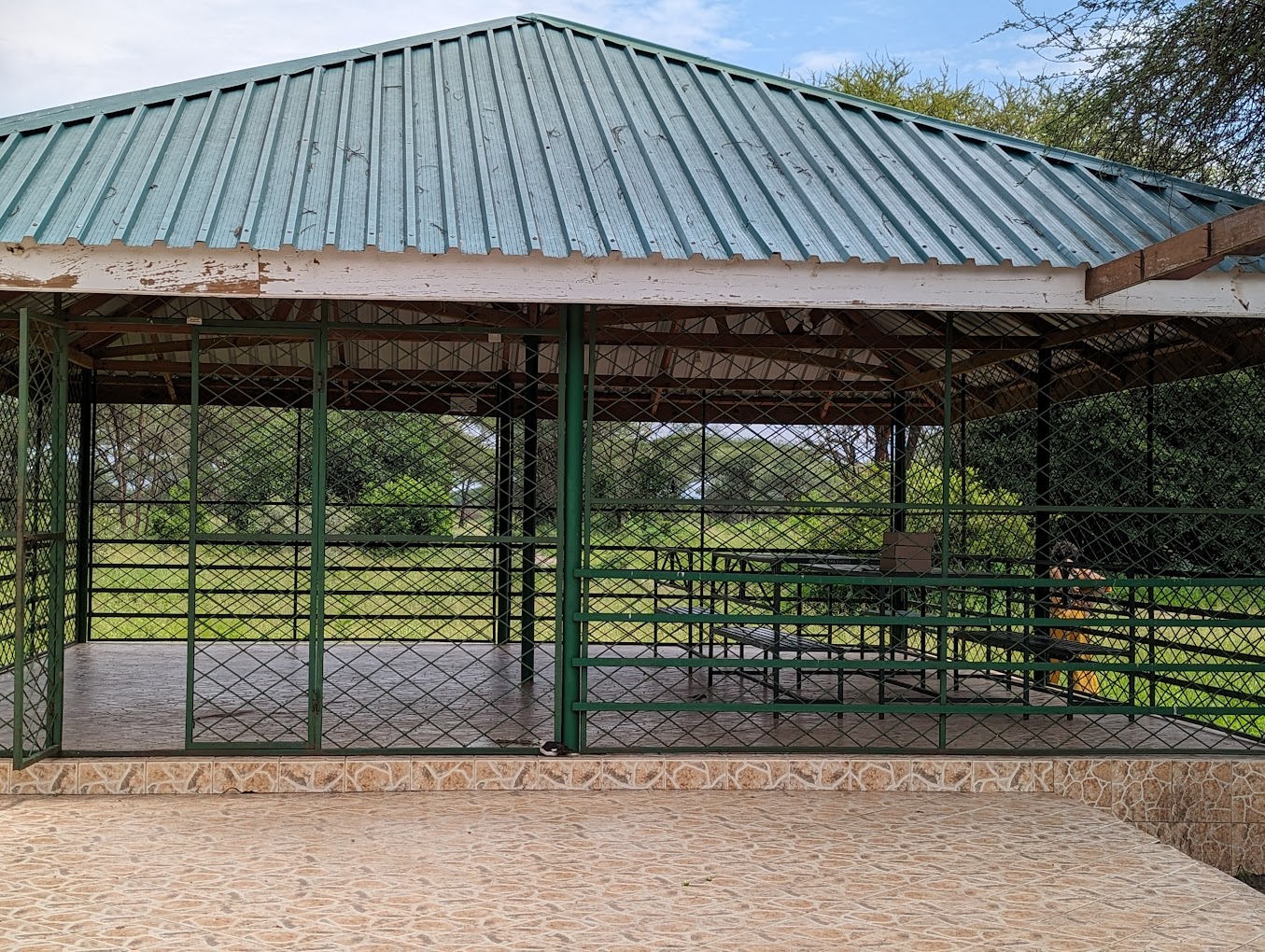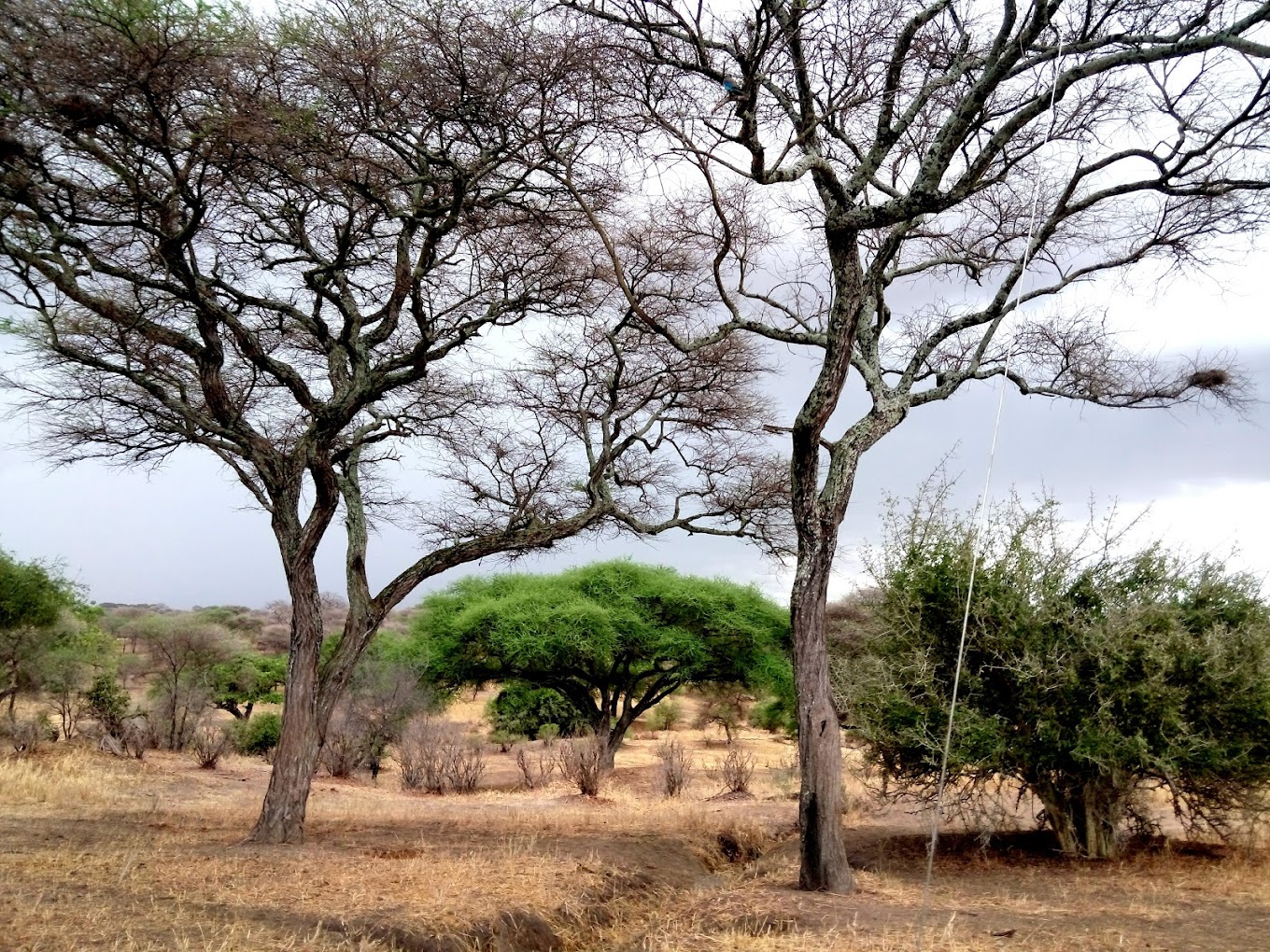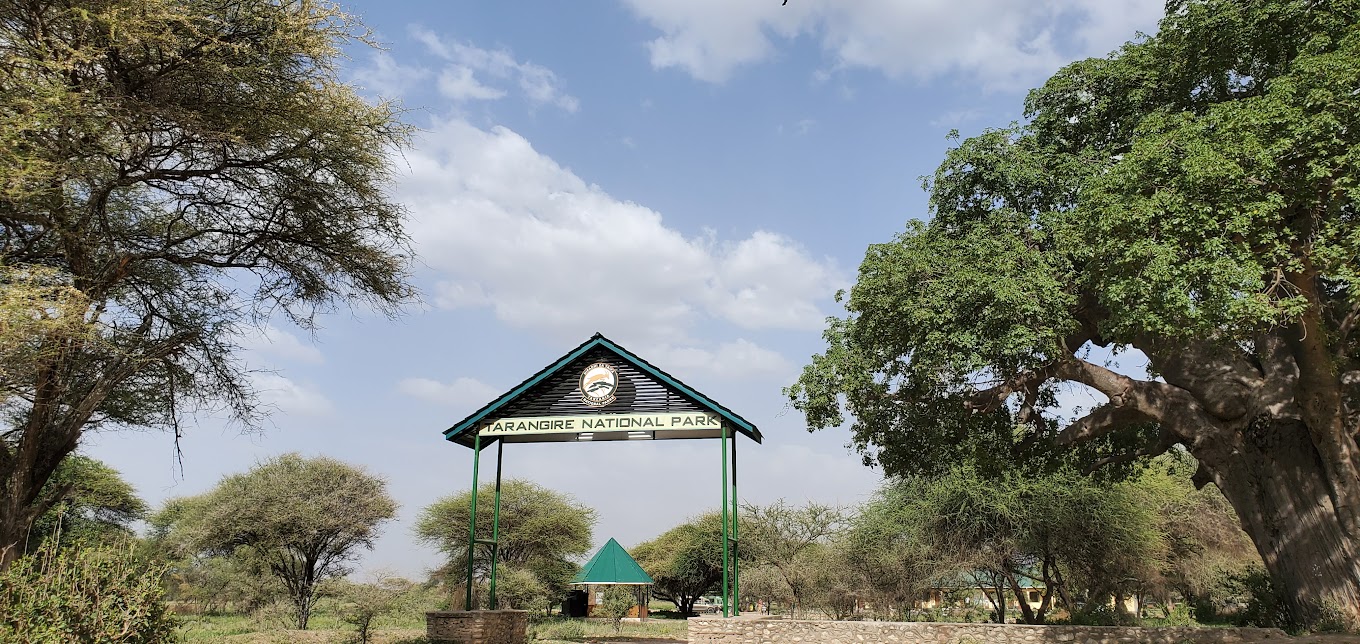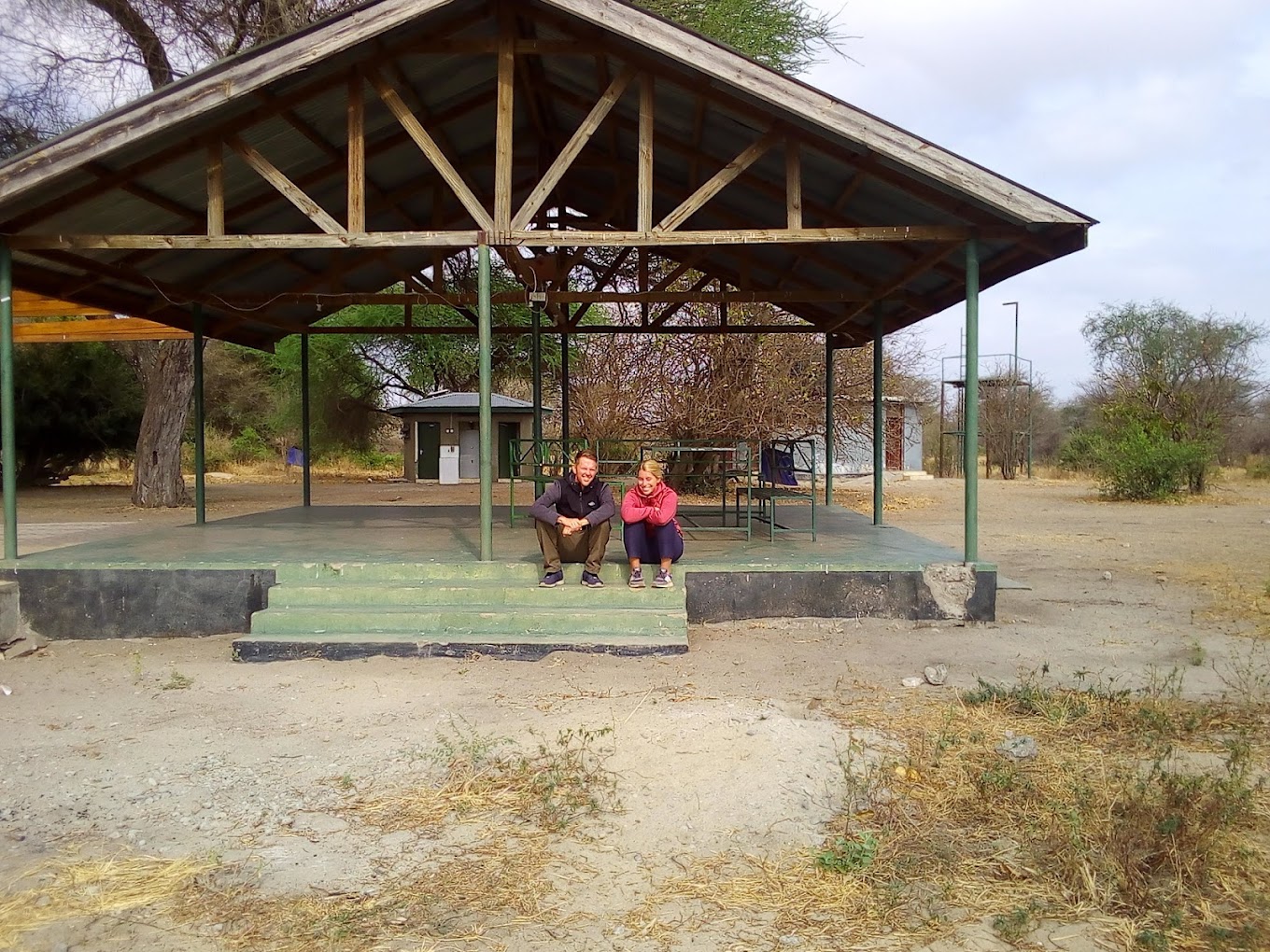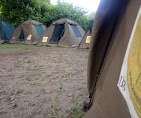Tarangire National Park, one of Tanzania’s premier safari destinations, offers not only luxury lodges but also a variety of campsites for those seeking a more adventurous and immersive experience. Camping in Tarangire brings visitors closer to nature, allowing them to hear the sounds of the wild at night and experience the park’s rich biodiversity up close.
This guide will explore the top campsites in Tarangire National Park, highlighting the facilities, types of camping experiences, and key tips for a memorable stay.
1. Public Campsites
Public campsites are basic, affordable options for budget travelers who want to experience Tarangire’s wilderness without the luxury of lodges or tented camps. They offer the essentials for a camping experience while providing proximity to the park’s wildlife.
Tarangire Public Campsite no. 1
- Location: Close to the Tarangire River, providing easy access to game drive routes. Here is exact location on Google.
- Facilities: Basic amenities such as pit latrines, cold showers, and an area for campfires. No electricity is available, so campers should be well-prepared with their own gear.
- Experience: The campsite offers beautiful views of the river and surrounding baobab trees. It’s common to hear elephants, lions, and other wildlife at night, making it an authentic and thrilling experience.
Pros and Cons of Tarangire Public Campsite No. 1
Pros
- Proximity to Wildlife
- The campsite offers close encounters with wildlife, such as elephants and giraffes roaming near the tents.
- Waking up to animals in their natural habitat provides an authentic safari experience.
- Beautiful Scenery
- The campsite is surrounded by baobab trees and offers stunning views of the park’s landscape.
- The sunsets and scenic vistas are highlights for campers seeking to immerse themselves in nature.
- Affordability
- This is a budget-friendly option for travelers who want to experience Tarangire without the luxury price tag of lodges or tented camps.
- Clean Facilities
- While basic, many visitors have noted that the toilets and showers are relatively well-maintained compared to other public campsites in Tanzania.
- Facilities include running water, flush toilets, and cold showers.
- Security
- The presence of a watchman ensures that campers feel safe, even though the campsite is close to wildlife.
- Campfires Allowed
- Visitors can enjoy bonfires at night, enhancing the traditional camping experience in the wild.
Cons
- Basic Amenities
- The campsite is very basic, with only minimal facilities such as pit latrines and cold water showers. This may be challenging for travelers seeking more comfort.
- Insects
- There are frequent mentions of insects in the showers and toilets, which might deter some visitors who are not used to roughing it in the wild.
- Occasional Dodgy Toilets
- Although many campers find the facilities acceptable, some have complained about the condition of the toilets, stating they could be better maintained.
- Noise from Wildlife
- While the proximity to wildlife is a unique feature, it also means that noises from animals such as elephants, lions, and hyenas may disturb sleep.
- No Electricity
- There is no electricity, so campers need to be fully prepared with flashlights and battery-operated gear.
- Limited Shelter
- In the event of rainy weather, there is limited shelter, and campers need to ensure they have a sturdy tent to withstand the elements.
Conclusion
Tarangire Public Campsite No. 1 is ideal for budget-conscious travelers looking for a genuine and immersive safari experience. While it lacks luxury, the incredible proximity to wildlife, beautiful surroundings, and affordable rates make it a popular choice. However, potential campers should be prepared for basic amenities, potential insect encounters, and bring all necessary camping gear.
Tarangire Public Campsite B
- Location: Situated in a more remote part of the park.
- Facilities: Similar to Campsite A, with basic toilet and shower facilities. Campers must bring their own tents, food, and cooking equipment.
- Experience: Ideal for those looking for a more secluded experience, away from crowds. The site provides excellent access to some of the park’s best wildlife viewing areas.
2. Special Campsites
For those looking for a more private experience, special campsites in Tarangire offer exclusive use of a campsite without other guests nearby. These campsites are perfect for travelers seeking solitude and a deeper connection with the wild.
Lemiyon Special Campsite
- Location: Situated near the Lemiyon Plains, a prime wildlife viewing area.
- Facilities: No permanent facilities, making it a true wilderness experience. Campers must be fully self-sufficient, bringing their own water, portable toilets, and all necessary camping equipment.
- Experience: The absence of other guests enhances the feeling of being in the untamed wild. This area is known for its incredible elephant sightings and proximity to big game, making it ideal for wildlife enthusiasts and photographers.
Silale Special Campsite
- Location: Near the Silale Swamps, where birdwatching and predator sightings are common.
- Facilities: Completely basic with no running water or built facilities. Campers need to carry their own equipment and supplies.
- Experience: Known for its birdlife and predator activity, Silale offers a unique camping experience, especially during the dry season when animals gather around the swamp.
Matete Special Campsite
- Location: Near the Matete River, offering scenic views and opportunities for wildlife sightings.
- Facilities: No permanent facilities, but the campsite provides an off-the-grid, adventurous experience.
- Experience: The Matete area is less frequented by tourists, making this an excellent spot for those seeking a peaceful and intimate encounter with Tarangire’s wildlife.
3. Private/Operated Campsites
There are also private campsites in and around Tarangire, often managed by safari operators. These sites provide more facilities and services, offering a balance between camping and comfort.
Tarangire River Camp (Semi-permanent Tented Camp)
- Location: Just outside the park near the Tarangire River.
- Facilities: Spacious tented accommodations with en-suite bathrooms, hot showers, and even electricity. The camp also has a dining area, bar, and a swimming pool.
- Experience: This camp offers a luxury camping experience with direct access to the park. The nearby river draws wildlife, providing fantastic viewing opportunities even from the camp itself.
Whistling Thorn Tented Camp
- Location: On the northern boundary of the park, within a Maasai community land.
- Facilities: Permanent tented accommodations with private bathrooms, hot showers, and flush toilets. The camp also offers guided walking safaris and cultural tours with the Maasai.
- Experience: A unique combination of wildlife viewing and cultural immersion. The camp’s location near the Maasai village allows guests to experience both the natural beauty of Tarangire and the rich traditions of the Maasai people.
4. Self-Camping Tips for Tarangire
For those planning a self-camping trip in Tarangire, preparation is key. Here are some essential tips:
Bring Proper Gear
- Ensure you have a sturdy tent, sleeping bags, and cooking equipment, as the public and special campsites lack these amenities.
- Don’t forget essential items such as flashlights, headlamps, and first aid kits.
Pack Enough Water and Food
- Most campsites do not provide running water or food, so be sure to bring enough water for drinking, cooking, and cleaning.
- Pre-pack your meals or bring non-perishable foods, as there are no stores or restaurants at the basic campsites.
Stay Safe Around Wildlife
- Always be cautious and aware of your surroundings. Do not leave food unattended, as it may attract wildlife.
- Keep a safe distance from animals, and never venture out of your tent at night without a guide.
Use Campfires Responsibly
- Campfires are allowed in designated areas, but always use them carefully and ensure they are fully extinguished before going to bed.
- Be mindful of the dry season, as fire hazards can be high.
Check Weather Conditions
- The dry season (June to October) is the best time for camping in Tarangire, as the roads and campsites are more accessible. During the wet season (November to May), some areas may become difficult to reach due to flooding.
Expert Insights into Camping at Tarangire National Park
Choosing the Right Campsite
When planning a camping experience in Tarangire National Park, it’s essential to understand the different options available. Special campsites within the park, though more expensive, offer a deeper wilderness experience, away from the main entrance, ensuring more peace and quiet. These sites need to be booked in advance and provide no facilities, so campers must be self-sufficient. Alternatively, Public Campsite No. 1, located around 5 kilometers from the entrance, provides basic amenities like showers and toilets at a more affordable price.
Location and Wildlife Encounters
One of the key appeals of camping in Tarangire is the close proximity to wildlife. Whether you’re at Public Campsite No. 1 or a more remote special campsite, animals such as elephants, giraffes, and buffalos often wander close to the campsite. For those seeking a more immersive experience with nature, choosing a site deeper in the park offers more opportunities to encounter animals in their natural habitat.
Pros and Cons of Public Campsites
- Pros:
- Affordable pricing.
- Close proximity to animals like elephants.
- Basic but clean facilities, including toilets and showers with running water.
- Solar-powered lighting in some areas.
- Cons:
- Basic amenities that may not meet the standards of those seeking more luxury.
- Insects are common in the bathrooms and showers, which might be a challenge for some campers.
- Being near the park’s entrance can lead to more traffic from safari vehicles.
Wildlife Safety
Safety concerns about camping among wildlife are common. While lions, leopards, and other predators are present in the park, incidents involving predators attacking campers are extremely rare. Wildlife tends to view tents as solid structures, and guides or park staff often ensure safety by monitoring animal movements. As long as campers follow guidelines, such as keeping the tent zipped and not leaving food exposed, camping in Tarangire is a thrilling but safe experience.
The Unique Tarangire Experience
Camping in Tarangire allows visitors to experience the park’s natural rhythms up close. The thrill of hearing lions roar at night or elephants walking close to your tent adds an element of excitement that more formal lodges can’t replicate. Early morning game drives from the campsite also provide excellent opportunities to see wildlife in action before the crowds arrive.
Recommendations for Budget Travelers
For travelers on a budget, camping is a great way to experience Tarangire’s wildlife while keeping costs low. Public campsites offer the basics without sacrificing the essence of the safari experience. However, for those looking to splurge, special campsites provide a more isolated and exclusive setting, though without any added amenities.
Key takeaway;
Camping in Tarangire National Park is a fantastic option for those seeking an affordable yet authentic experience in the African wilderness. With the right campsite selection, visitors can enjoy the best of both worlds: close encounters with wildlife and the tranquility of nature. Whether you choose a public or special campsite, be prepared for an unforgettable adventure among Tarangire’s baobab trees and diverse wildlife.
Conclusion: Camping in Tarangire
Camping in Tarangire National Park offers a unique and thrilling way to experience Tanzania’s wilderness. Whether you prefer the ruggedness of public and special campsites or the comfort of tented camps managed by private operators, there’s an option to suit every traveler’s needs. Camping in Tarangire allows visitors to immerse themselves in the park’s natural beauty, enjoy close encounters with wildlife, and experience the magic of the African bush under the stars.
With proper preparation, camping in Tarangire can be one of the most memorable and rewarding safari experiences.

